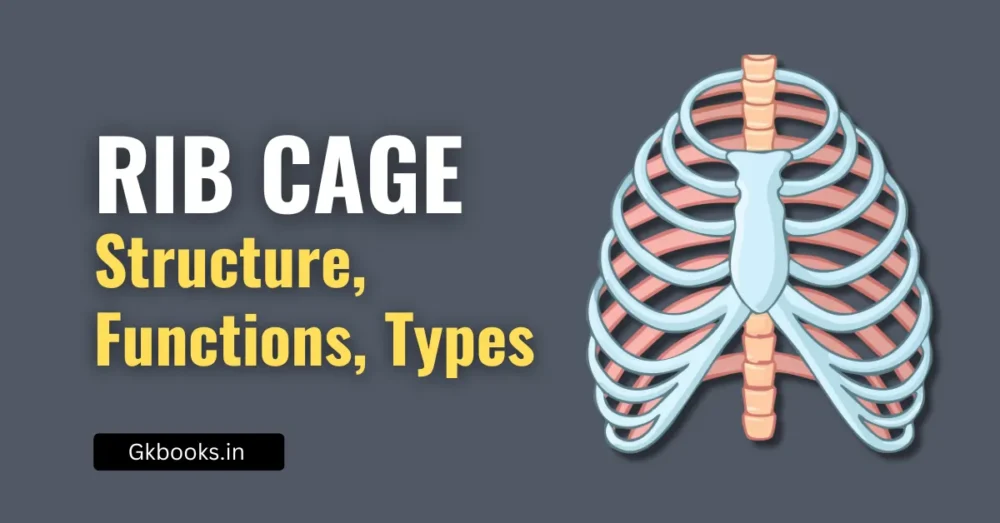Vacuoles are an essential part of a cell. They help store materials, maintain the cell’s shape, and perform other important functions. In this article, we will explore what vacuoles are and their structure, types, and functions in simple terms. This knowledge is useful for students preparing for SSC, RRB NTPC, UPSC, and state-level exams.
What is a Vacuole?
A vacuole is a membrane-bound sac present inside a cell. It is filled with liquid and stores different substances such as water, nutrients, and waste products.
Key Points:
- Vacuoles are like storage bags inside the cell.
- They store food, water, and waste materials.
- They help keep the cell rigid and healthy.
◾Also Explore: Cells the Unit of Life Complete Overview [NCERT]
Structure of a Vacuole
Vacuoles have a simple structure:
| Part | Description |
|---|---|
| Membrane | A thin covering called tonoplast that protects the vacuole. |
| Fluid Inside | A liquid containing water, salts, sugars, and enzymes. |
| Size | Larger in plant cells, smaller in animal cells. |
Diagram of a Vacuole
Types of Vacuoles
Vacuoles are found in both plant and animal cells, but their size and functions differ.
1. Vacuoles in Plant Cells
- Large and central (occupies almost 90% of the cell’s volume).
- Helps maintain turgor pressure (keeps the plant firm).
- Stores nutrients, pigments, and waste products.
2. Vacuoles in Animal Cells
- Small and many in number.
- Stores food, waste, and enzymes.
- Helps in intracellular digestion (breaking down materials inside the cell).
3. Vacuoles in Unicellular Organisms
Some single-celled organisms (like Amoeba and Paramecium) have special types of vacuoles:
- Contractile Vacuole: Removes excess water from the cell.
- Food Vacuole: Stores and digests food particles.
Functions of Vacuoles
Vacuoles perform various important functions:
| Function | Explanation |
|---|---|
| Storage | Stores water, food, and waste materials. |
| Support | Helps maintain cell shape and pressure in plants. |
| Waste Disposal | Stores and removes toxic substances. |
| Protection | In some plants, vacuoles contain defensive chemicals to protect against herbivores. |
| Digestion | In unicellular organisms, vacuoles help break down food. |
Why Are Vacuoles Important?
- Help plants stand upright by providing support.
- Keep the cell hydrated by storing water.
- Act as a storage unit for nutrients and waste.
- Protect the cell from harmful substances.
Quick Revision Points
- Vacuole = Storage sac inside a cell.
- Large in plant cells, small in animal cells.
- Stores water, nutrients, and waste.
- Helps in cell structure, digestion, and protection.
FAQs on Vacuoles
The primary function of a vacuole is storage. It stores water, nutrients, and waste materials and helps maintain the cell’s shape.
Plant cells have a large central vacuole to store water and maintain turgor pressure, which helps keep the plant firm and upright. In contrast, animal cells have smaller vacuoles for temporary storage.
There are three main types:
Central vacuole (Plant cells) – Stores nutrients and maintains pressure.
Small vacuoles (Animal cells) – Store food, waste, and enzymes.
Special vacuoles (Unicellular organisms) – Contractile vacuole removes excess water, and food vacuole aids digestion.
The vacuole is surrounded by a membrane called the tonoplast, which controls the movement of substances in and out of the vacuole.
Unicellular organisms have contractile vacuoles to expel excess water and food vacuoles to store and digest food, helping them survive in their environment.
Conclusion
Vacuoles are one of the most important organelles in a cell. They help in storage, waste management, and maintaining the cell’s shape. Understanding vacuoles will help you answer many biology-related questions in exams like SSC, RRB NTPC, UPSC, and state-level tests.
💡 Tip: Draw a simple diagram of a plant and animal cell, label the vacuole, and revise its functions regularly!
📢 Keep Learning! Stay curious, explore more about cells, and boost your knowledge for competitive exams! 🚀







